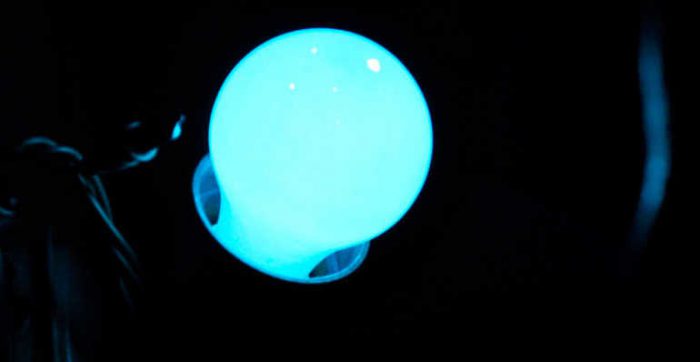Valerie Eacret, ERS, for Zondits
As the energy efficiency world strives to reduce the electricity needed to power lighting, a new product is giving LEDs a run for their money. Graduate students at Gippsland Lakes University in Australia have come up with a new light fixture that runs on no electricity.
The students were inspired by a late-night trip to the nearby beach during an algal bloom, which lit up the beach with bioluminescent dinoflagellates. The students decided to capture a jar of ocean water with these single-celled organisms and attempt to grow them in their lab. To no one’s surprise, algae grows of its own accord in a variety of conditions, and the dinoflagellates stayed luminescent for a full year inside the lab.
Decorative lighting was the last to see LED options that took hold in the market. Flame-shaped lamps, often found in chandeliers, appeared in LED form long after LED A-type light bulbs and LED tubes were already replacing linear fluorescents. Aesthetics were prioritized over efficiency, and decorative LEDs were an afterthought for years. This time, though, lighting for ambiance gets the first turn at the next new efficient lighting breakthrough.
The researchers plan to market their bioluminescent light, which gives off a bluish hue, as a unique decoration for outdoor parties where electricity isn’t easily available. They are working on improving the lumen output, color temperature, and lifetime of the lamp so that future iterations of the light might eventually become appropriate for more functional types of lighting – in offices, homes, and other more typical applications. To help with this, the students have selected study participants to use these lights – and only these lights – in their bedrooms to discover how the current color temperature (and perhaps other aspects of the light) affect their lives. The researchers have also retrofitted an entire building on campus with the new lighting, which the participants have at least one class in twice a week. As more advanced iterations of the technology are created, the lights in the campus building and in participant bedrooms will be replaced to chart the improvement in each new version of the light.
